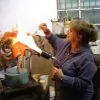Unlike many contemporary artists, Rusudan Khizanishvili looks beyond current affairs and fixed political statements in her work, striving to use her colorful configurations of the natural world to connect us with our most intrinsic selves.

The Georgian artist depicts fantastical, sometimes hybrid creations of human forms accompanied by animals, who are themselves obscured by shapes and flora, creating a multi-layered, multi-species interconnectedness.
We forgot that in prehistoric times we had a deep intuition and could predict the future, read thoughts, and even use the same language as animals.
Rusudan Khizanishvili
At first glance, these tableaus feel alien to us, as if we are stepping into a dream-like, ungoverned world, but they are also viscerally comforting, an accomplishment on Khizanishvili’s mission on the unification of this intuitive recollection. She stresses that her work is tethered to memory, to the stories we tell each other and the perceived spaces (or lack thereof) between us.
However, it is not a utopia she creates; it is a forgotten reality. In the creation of a new species—a last refuge of humanity, Khizanishvili’s work suggests—we understand each other by rejecting this collective amnesia that both separates and ungrounds us.
The artist’s language of symbolism is more intuitive than conceptual, more subliminal than theoretical. Her archetypal figures stem from theological and mythological stories we have been telling each other for centuries, with the ambiguous but essential question at their base: what does it mean to be human? The common theme underlying her work involves the unlearning of an often messy, sometimes negligent, painfully layered human experience, lived in a constrained body—each one, as Khizanishvili notes, a “universe” in itself.
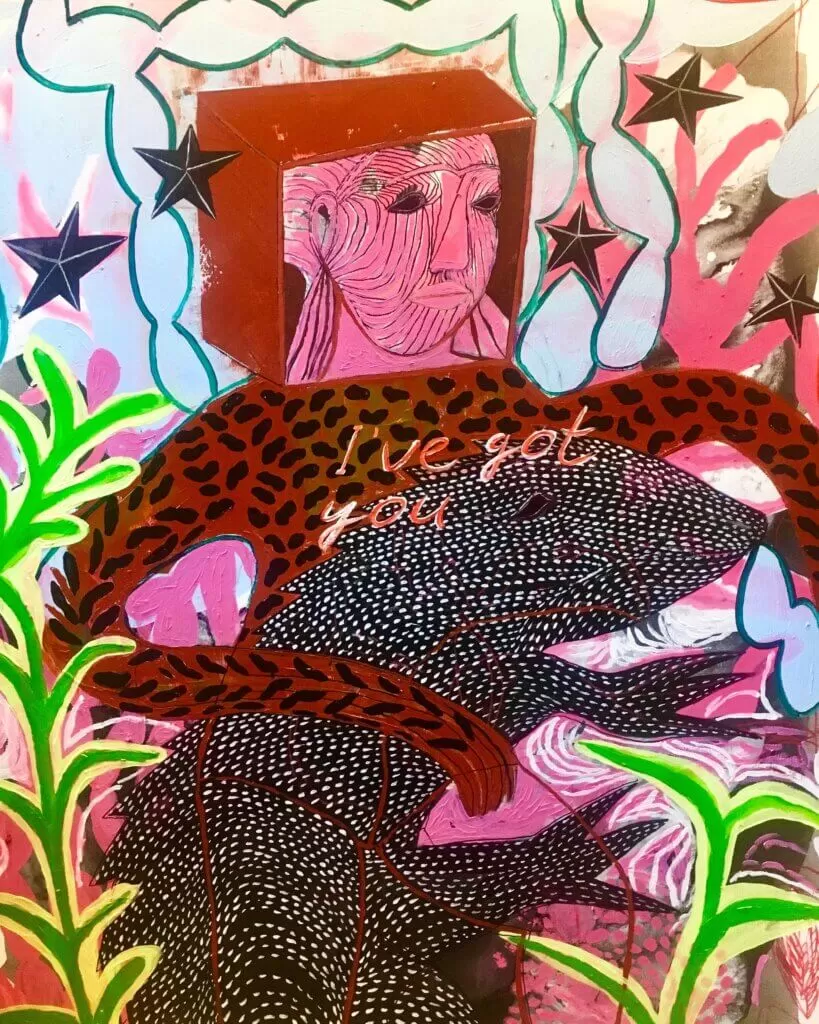
Q: Describe your creative process. Where does it begin for you? Is it planned, spontaneous—a combination of both?
Rusudan Khizanishvili: First of all, I prepare a background for the painting, I certainly know what I want to paint. I almost never make sketches for my paintings, so I directly paint on the canvas; this is very precise work so I must be very careful with every brushstroke. I do several layers before I make a figure. The painting is always about some story and there is a particular message behind [it]. So, I would say it is fairly planned, but also open-ended.
Q: How do you know when a piece is finished?
Rusudan Khizanishvili: I just look at the painting and see if there is nothing to add so the painting is finished; it’s happening by itself.
Q: How has your practice changed over time? How have your mediums changed?
Rusudan Khizanishvili: If you take a look at my old paintings you can see the difference between each period. When I change the idea and concept also the language of painting is changing. I used to paint in oil until 2013 and since that year I use acrylic paints. But from the beginning [of] the pandemic I am back to oil paints again and I think that I will stick to oil longer then I thought.
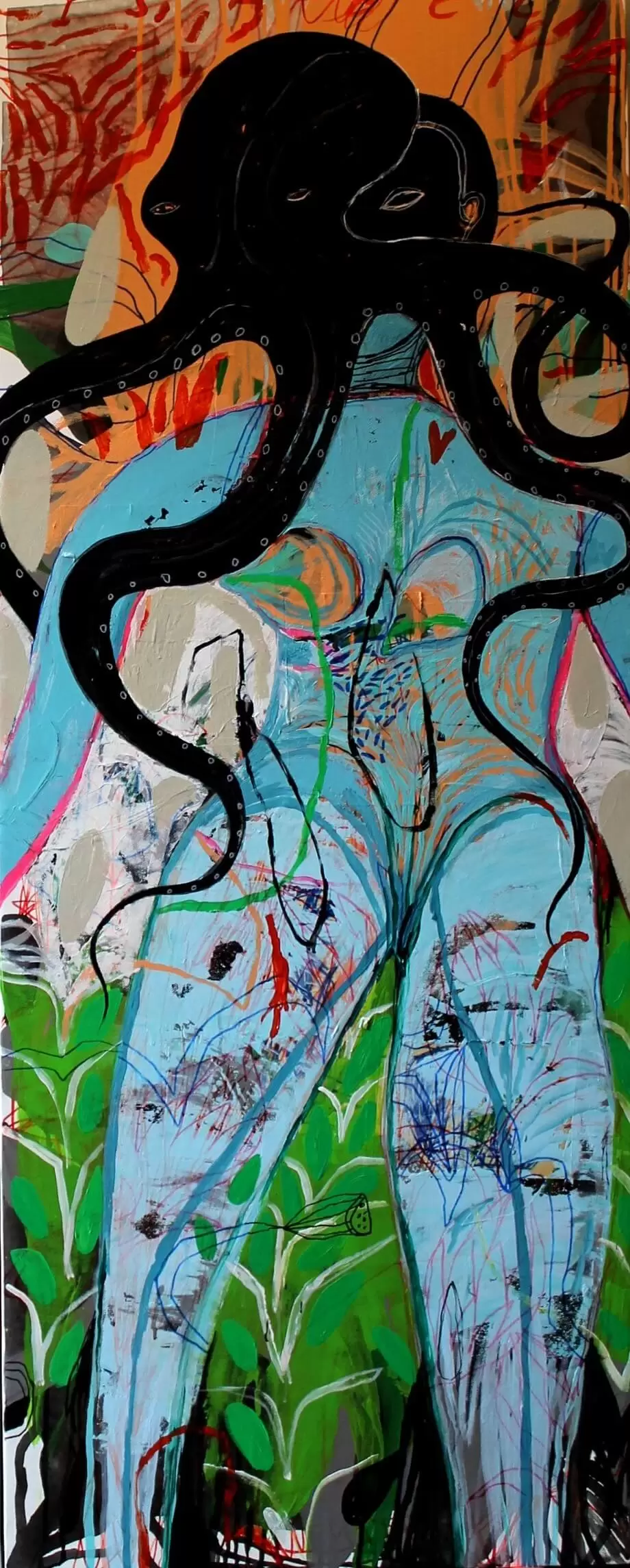
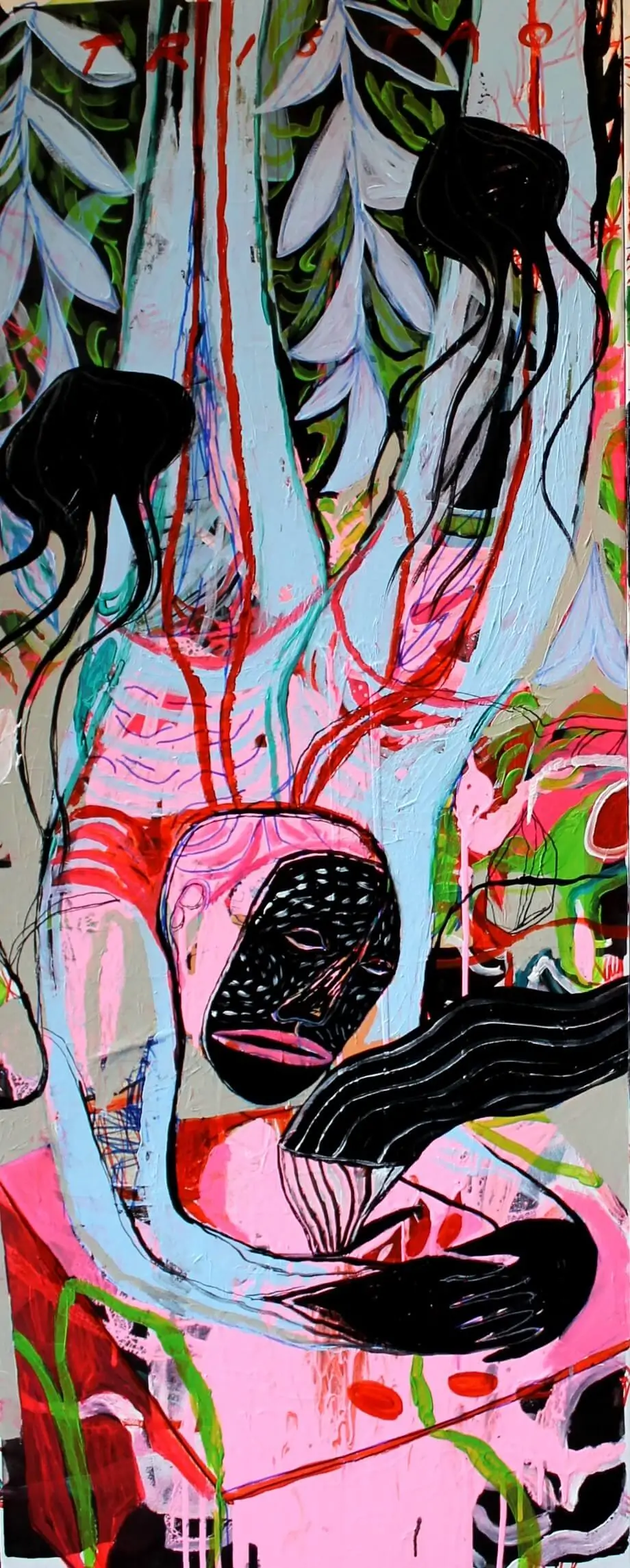
Q: What scenes do you wish to depict in your work? What stories are being told?
Rusudan Khizanishvili: There are always some stories in my paintings, I always make series about some particular narratives. I love to paint certain elements of myths, religious series, or depiction of flowers, but the main character always remains the human being. Mostly all my works are about connection and/or disconnection of humans with the past, present and future; connection or loss of it with Nature and the animal world. There is always some search for the role of humans, how they are influenced by surrounded world and how they change it in turn.

Q: How would you describe your figures? Are they universal archetypes or do they play more personal roles?
Rusudan Khizanishvili: I can say they are both. Archetypes are very important part of my humans and the contemporary storyline that I create is always based on archetypes. I love to depict the well-known ancient myths with medieval stories and motives taken from miniatures or their Book of hours; making my own and more personal subjects.
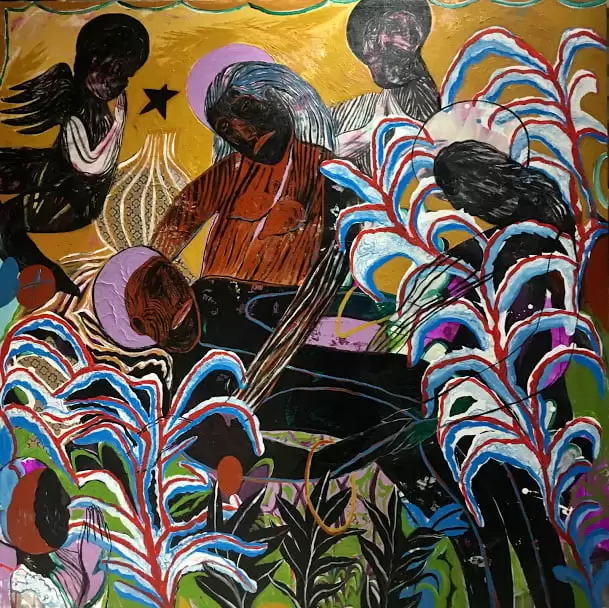
Q: How do you view our relationships with the natural world? Is the world you depict ours, or is it meant to depict a fantastical, otherworldly dimension?
Rusudan Khizanishvili: Well, this is all about the memory. We collectively forgot Nature, we forgot that we are in a very close connection with it. We forgot that in prehistoric times we had a deep intuition and could predict the future, read thoughts, and even use the same language as animals.

Q: What inspired the themes of death and rebirth in your series Conversion Device?
Rusudan Khizanishvili: It was all about ecological evolution and philosophical consistence, how can we survive in the world which we are destroying day by day and how can we find the new skills for surviving.
Q: Which of your works resonate the most with you? Do you have a favourite piece or series?
Rusudan Khizanishvili: Until this year Conversion Device was my favorite series but now I am in love with the new series I have started to paint in the beginning of 2020. This series portrays humans stuck in their comfortable and cozy rooms, the humans who are afraid to leave their comfort zones and start living in the New World, learning the new life. This series will be largely presented at my upcoming show Rooms & Beings at 68 Projects, Berlin in November through January of this year.
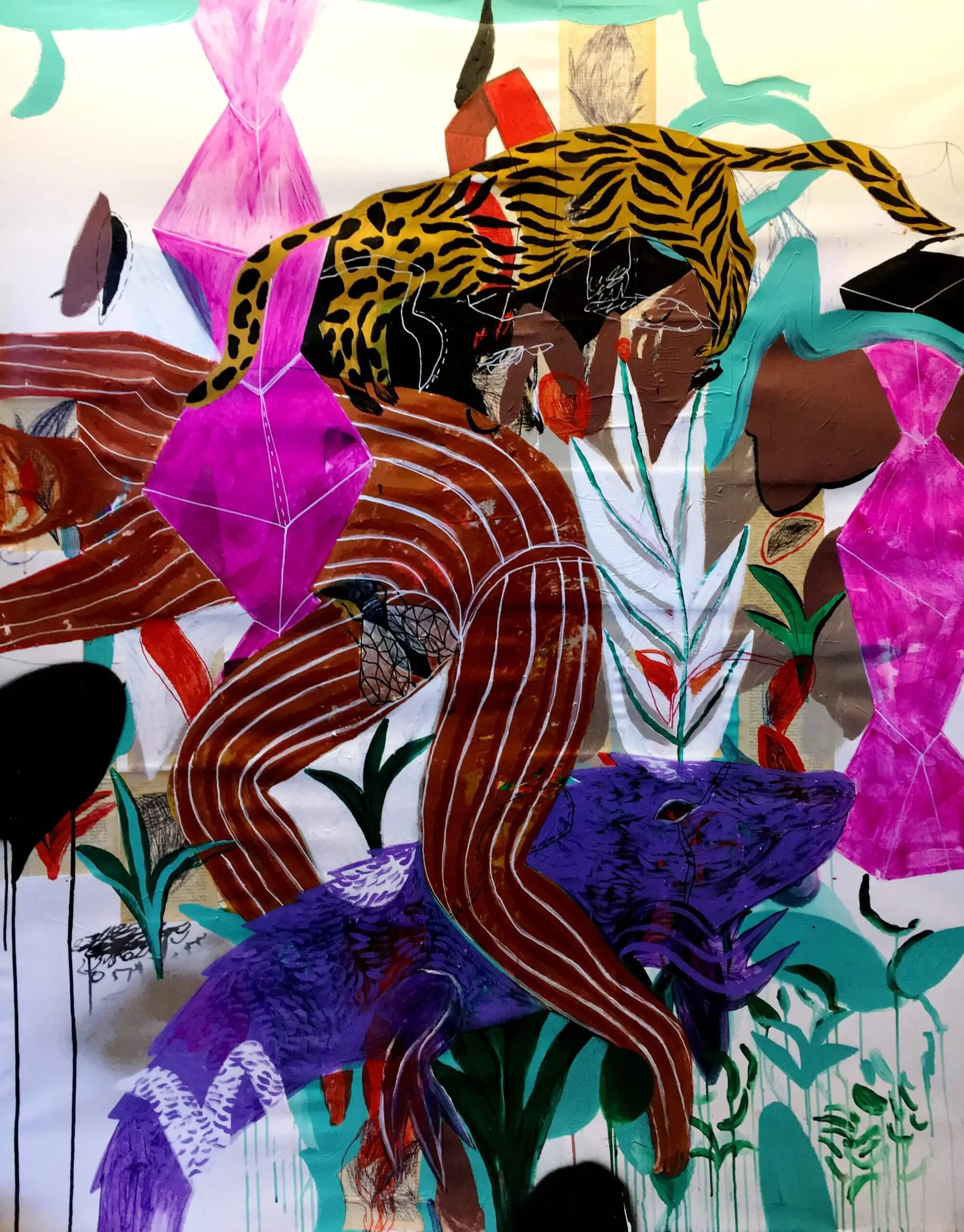

Q: You previously stated that you’re interested in configurations of the human body. How do you connect that interest with empathy and humanity in your craft?
Rusudan Khizanishvili: I adore the shape of human bodies and the shapes of animals, as well the beauty of human souls. In the chaotic strive for attention and political causes we are missing how sensitive and amazing we are; each human represents a separate universe for me. We have an endless power and braveness because, we did and do change the world, everything I do is about our mission on the planet.
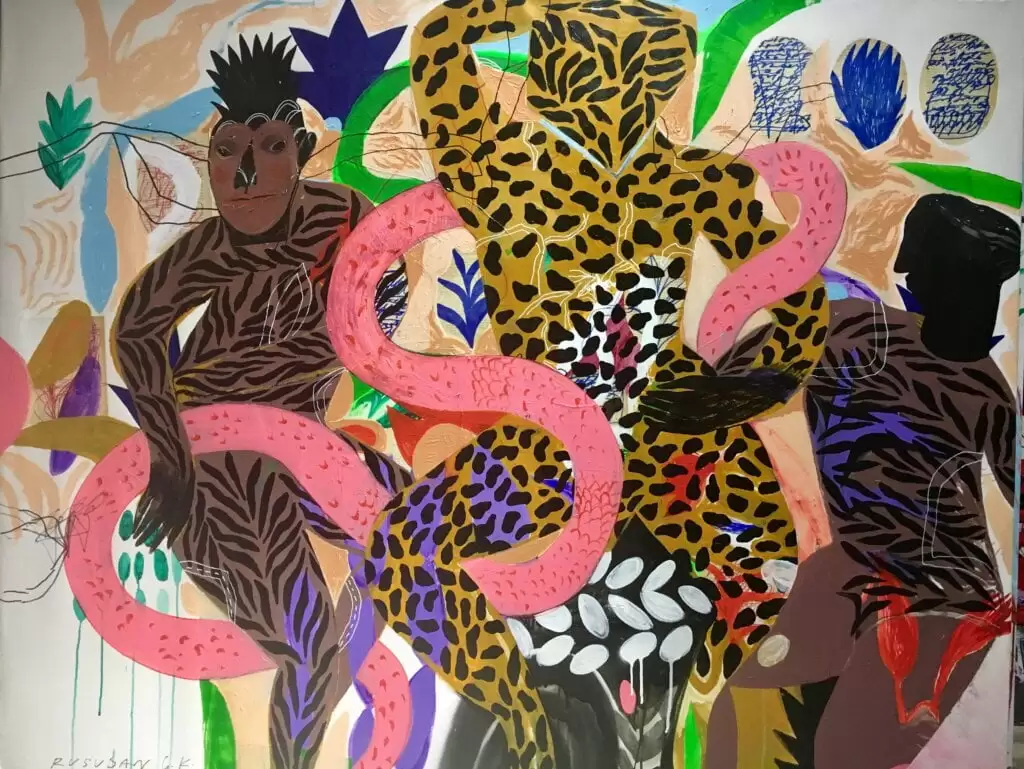
Q: What are the most rewarding and challenging aspects of your work as an artist?
Rusudan Khizanishvili: Life of artists is always about challenge, only aspects of this challenge are changing. If in the beginning of my artistic career I was thinking about my personal, recognizable language, then after acquiring it I am challenged with the language of messages. How I can bring and emphasize the ideas onto the canvases and explain to the spectators the main questions I have as well as the answers I would love to have? The main challenge that occupies me now is: How can we connect with each other being on the same or different levels of viewing the world?
https://www.instagram.com/rusudan_khizanishvili/
©2020 Rusudan Khizanishvili



